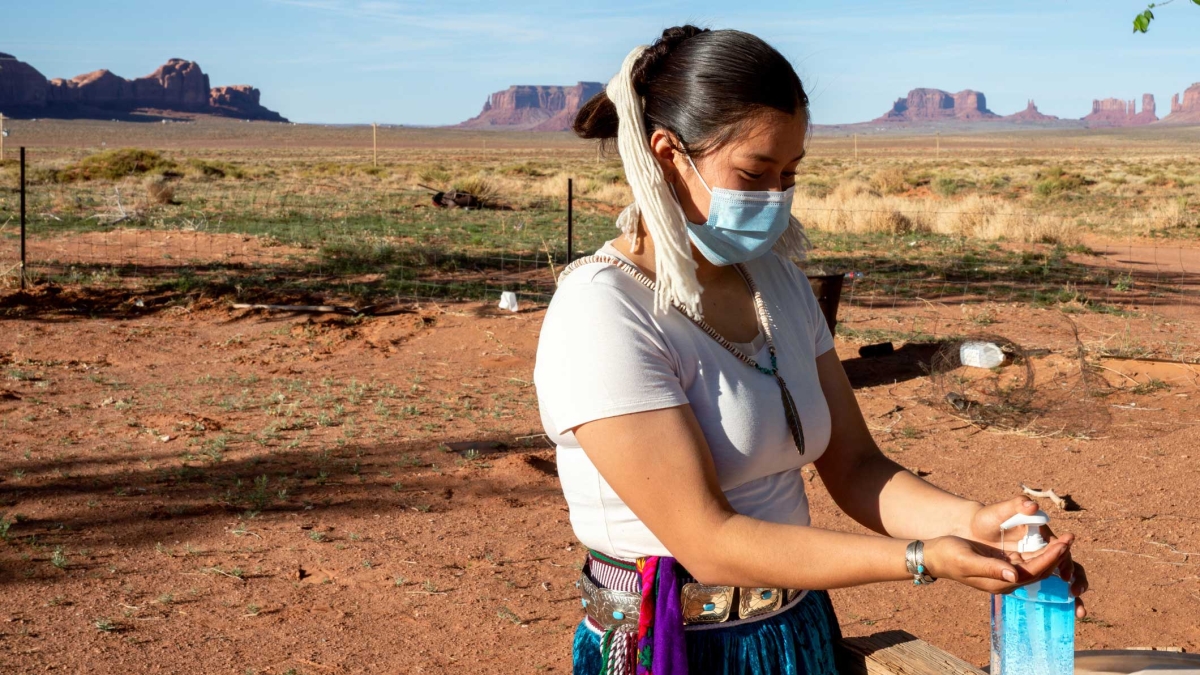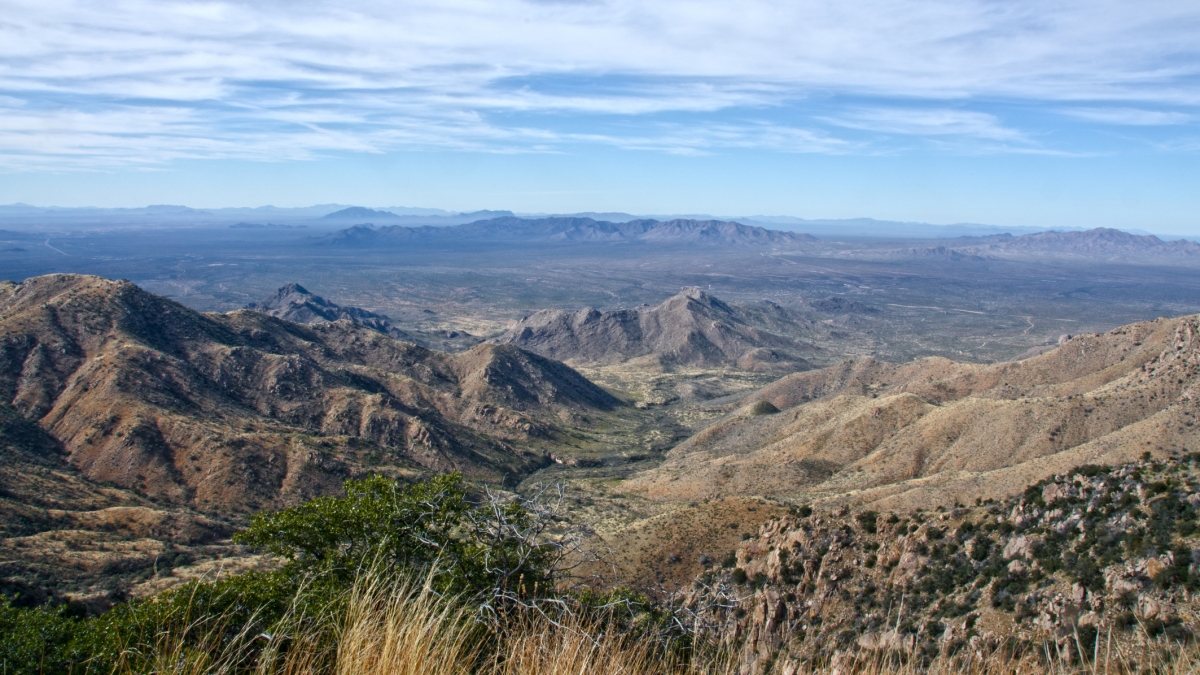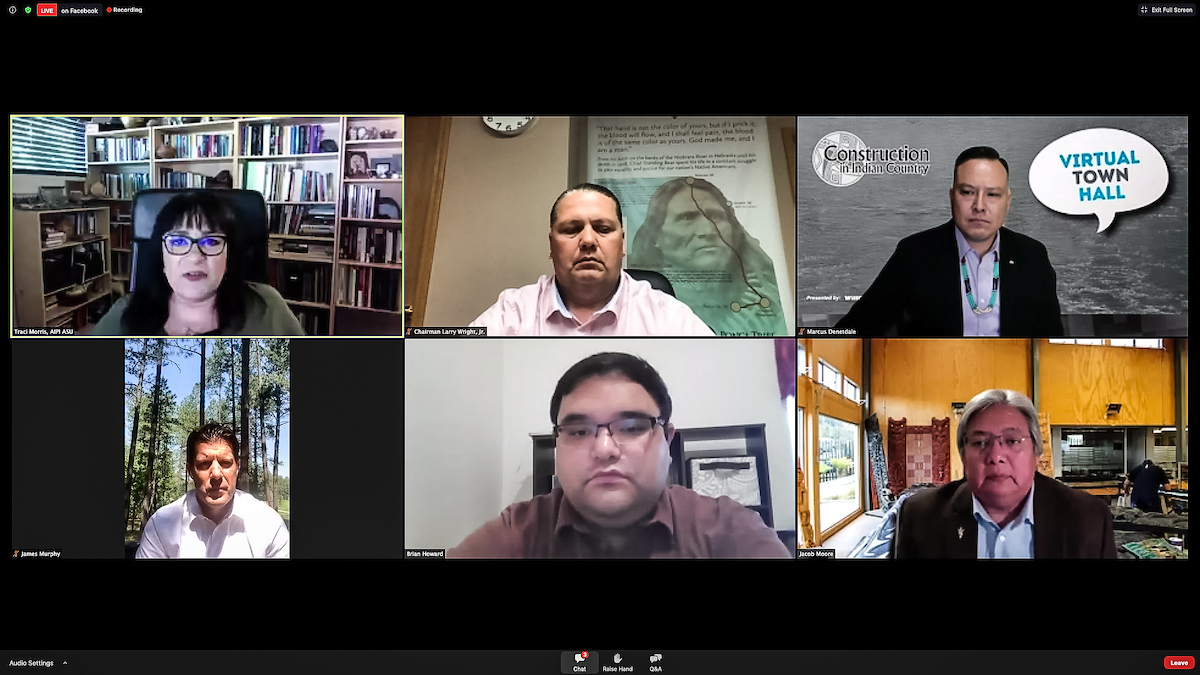Native nations are fighting COVID-19 on many levels
Town hall discusses solutions as the pandemic exposes systemic issues on tribal lands

COVID-19 has exacerbated infrastructure vulnerabilities in Indian Country and has brought attention to myriad issues that advocacy hasn’t been able to, experts say.
Even though the Navajo Nation’s highest per capita coronavirus infection rate has been getting the lion’s share of attention in the media, the lack of infrastructure — especially broadband — impacts civic engagement, education, energy and health care delivery on U.S. reservations affected by the pandemic.
These were some of the discussions that took place Friday in a virtual town hall hosted by Arizona State University’s Marcus Denetdale, program manager for Construction in Indian Country.
“My condolences to those that are grieving because of the devastating impact that COVID-19 has had on our tribal communities,” said Jacob Moore, associate vice president for tribal relations at ASU. “Our role at ASU is to not only help fulfill the immediate needs of these communities, but also to think about, 'What does recovery and renewal look like as we come out of our current state?'”
The goal of the town hall and subsequent panel discussion was to bring together tribal and business leaders to discuss the economic outlook and address the current situation in Indian Country as they continue fight COVID-19.
Moore said ASU’s response to tribal communities in need includes a variety of needs, such as providing COVID-19 test kits, testing research, medical and public health support, PPE supplies, chain supply management and monitoring wastewater.
“It's quite an honor to be affiliated with ASU and a president who recognizes the importance of our tribal nations and communities, not just here in Arizona, but across the country,” Moore said.
In addition to Moore, the panel also featured Jonathan Nez, president of the Navajo Nation; Traci Morris, executive director of ASU’s American Indian Policy Institute; Brian Howard, research and policy analyst, American Indian Policy Institute; James Murphy, chief executive officer, Willmeng Construction; Larry Wright Jr., tribal chairman of the Ponca Tribe of Nebraska; and Martin Harvier, president of the Salt River Pima-Maricopa Indian Community.
While ASU’s and others' efforts to help tribal communities have been exhaustive, the response simply isn’t enough. That’s because the needed infrastructure, especially when it comes to broadband and interconnectivity, is sorely lacking, according to Morris.
“The internet is the underpinning of our lives,” Morris said. “Everything depends on it, and we’re very far behind in Indian Country. We need broadband for everything from telehealth to education to energy management. The digital divide is real, and there are multiple divides.”
To illustrate her point, Morris said last year the American Indian Policy Institute released a research paper titled “Tribal Technology Assessment: The State of Internet Service on Tribal Lands.” Morris co-wrote the paper, which showed that many Native Americans on reservations do not have equal access to the internet and that most are using smartphones to go online at slower speed.
Morris said some of the major findings in the paper include:
- 18% of tribal reservation residents have no access to internet at home.
- 33% are relying on internet from a smartphone.
- 31% of tribal reservation residents who do have internet said the service was spotty.
“We have 162,000-plus people living on tribal lands that either are underserved or unserved when it comes to telecommunications infrastructure needs,” Morris said. “It was stunning to me that it took a pandemic to draw attention to the fact ... of the digital divide.” Toward this in April, the American Indian Policy Institute authored two policy briefs on the impacts of the digital divide on higher education on tribal reservations. The digital divide has also caused telecommunication problems with the delivery of online content to Native American students taking courses at ASU, said Howard.
“We’ve been looking at ways that ASU’s University Technology Office could support these issues, including providing Wi-Fi hot spot devices to ensure they can continue with their studies,” Howard said. Additionally, the institute's briefs were used by the ASU Office of the President in working with Arizona congressional leaders to push for broadband funding in potentially forthcoming infrastructure packages serving tribal lands
Wright said in addition to internet connectivity, infrastructure issues such as the lack of funding for road maintenance and health care facilities have created major headaches for his tribe and others in the Great Plains.
“A lot of our tribal nations are spread out over large areas, and in some cases, it’s two to three hours of drive time to get to a health care facility,” said Wright, whose tribal area covers 15 counties in Nebraska, Iowa and South Dakota. “That gets even more compounded when roads and bridges are closed because of flooding from the past few years, making travel even more difficult.”
Wright said the problem has been amplified because many Indian hospitals have either been shut down or are understaffed, which is why they’ve quarantined their elders and the tribe has declared a state of emergency this year.
“All of these things get exacerbated in a time like this when our health care crisis is magnified,” Wright said. “We have been grossly underfunded, and that impacts how we move forward.”
Harvier said because many of his community are susceptible to diabetes and other underlying health issues, he has stressed taking extreme precautions. He added that his tribe is in an urban setting and borders cities such Scottsdale, Tempe and Mesa.
“With the rise of numbers in the surrounding cities and in Arizona, ours (numbers of COVID-19 cases) have gone up also,” Harvier said. “And if it starts getting into the community, it can really affect a large portion of our membership.
Harvier said COVID-19 has impacted the community’s financial health as well. The tribe has had to shut down its two casinos, which employs hundreds of community members, Harvier said.
“Without any income being generated and coming in, a lot of tribes are looking at the CARES Act to fill some of those gaps to make sure everything is moving forward,” Harvier said. “But now we’re starting to see all the strings that are tied to it. There’s some confusion how we can actually use those funds.”
Things are quite serious for the Navajo Nation, said Nez, who piped into the meeting from his car as he was conducting a food and supply distribution in Tuba City. He said they recently instituted another weekend curfew, their ninth consecutive.
“Our numbers are going down, but we’ll see what happens,” Nez said, who also mandated wearing masks among tribal residents and has instituted “aggressive testing.”
Nez said most construction and infrastructure projects on the Navajo Nation have been delayed, businesses have been forced to close and tourism has been completely halted due to the pandemic.
“There is not even a gas pump that is open (during the curfew hours),” Nez said. “We’re losing a lot of revenue, but hey, you gotta do what you gotta do to protect your citizens.”
Nez added the pandemic has underscored the need for Native doctors, nurses, police officers and law enforcement, which is why he said he has set aside $50 million in scholarships for professional development and building capacity.
“I think many of us tribal leaders want to grow our own,” Nez said. “We want our own Navajo to be in these professions.”
Morris said the role of ASU is not only to support tribal communities, but to be partners in creating the pipeline of youth going into a range of professions.
“We strive to be part of the solution,” Morris said.
Top photo: A Navajo teenager uses hand sanitizer during the COVID-19 pandemic. Photo by iStock/Getty Images
More Health and medicine

First exchange student for Biodesign Institute Europe bridges labs 5,000 miles apart
This spring semester, Grace Colley traveled to Arizona State University and became the first student to participate in the Biodesign Institute Europe student exchange program. In doing so, she helped…

College of Health Solutions hosts visit from leading expert in genomic research
Some fortunate Arizona State University faculty, staff and students were able to gain valuable insights and perspective during a visit by one of the country’s leading figures in health and scientific…

Indigenous ASU research team recommends assistance for tribal members still reeling from COVID-19’s effects
When Matt Ignacio’s tribe, the Tohono O’odham Nation, donated $1 million to Arizona State University to support COVID-19 research, he applied for some of the money to understand and report any…
